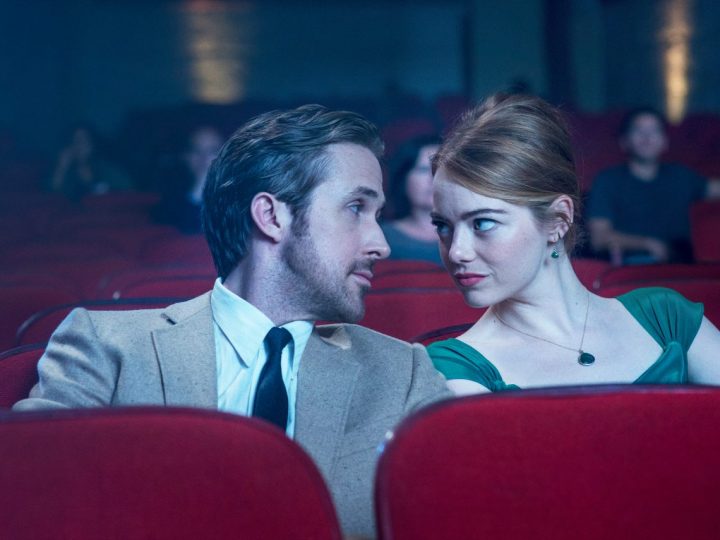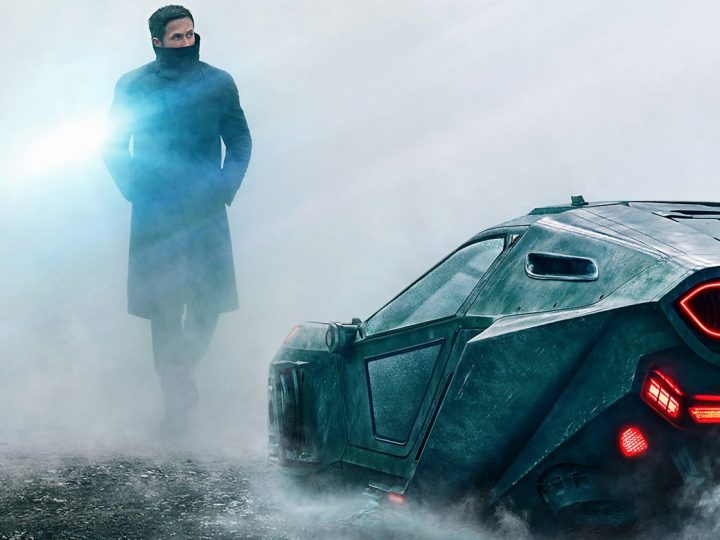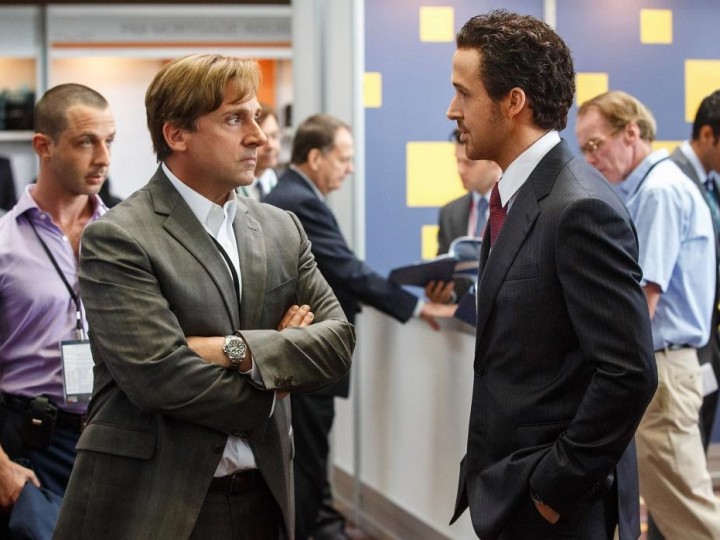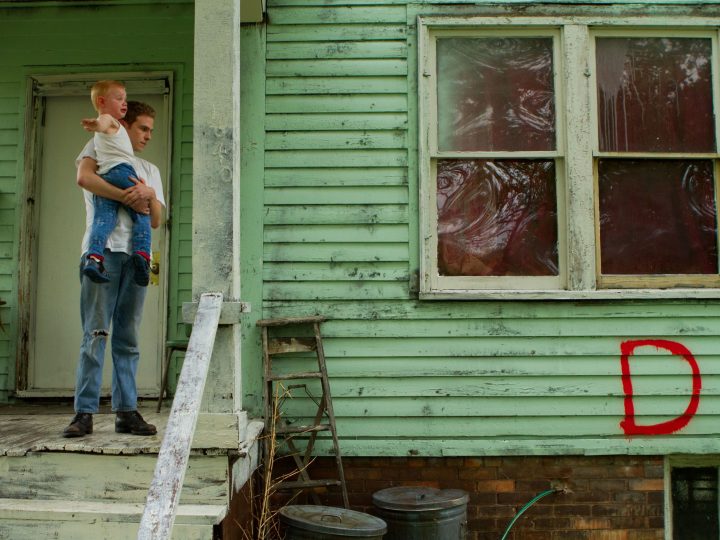Paris, April 6th, we have a meeting with Ryan Gosling & Reda Kateb at the movie theater Elysées Biarritz for a premiere screening of Lost River, Ryan’s first movie followed by his Masterclass.
The movie ends and left us puzzled. We are glad that Ryan will help us to understand his movie…
After a little while, Ryan & Reda arrive.
#lastmonday
Posted by Movie Guide Me on dimanche 12 avril 2015
Here we go for a 45 minutes Masterclass !
For starters, how did you come to the idea of directing this movie? What was the creative process ?
Ryan Gosling : I had a very romantic idea of America when I was young especially since I grew up near Detroit, city of the Motown & of the American Dream. When I actually discovered Detroit later, I was surprised because the idea that I had of it was totally different from reality. You could drive for miles without seeing anything but there were families that would hang on to their houses. Houses were often destroyed and burnt, the America, dream became a nightmare for them. I wanted to show what is Detroit today. One year before starting shooting, I bought a camera and I went there several times. The images I shot helped me in the writing of the movie but also for building its atmosphere.
There’s something really stricking & I think everyone realize that when they watched your movie, your characters have names as in fairytales relating what they do, like “bully” “rat” etc…? There is Johnny Jewel (the composer of the movie’s score) singing a song named “Big bad wolf”, there’s a bad curse and Detroit felt really much like a damzel in distress. why did you want to make it like a fairytale?
Ryan Gosling : Well, there’s something very surreal about being in those cities, in those neighborhoods, when you see how thoses families are living. It feels like if you spent any time there, you can see how they could feel like they were sort of the last people on Earth. It has Twilight Zone, a dark fairytale quality. It just landed itself to fantasy, it’s so hard to believe that it’s real & I just felt like as opposed to sort of telling the story the litteral way where to keep its specifics to Detroit, I felt like it would make it more accessible to people to access the emotions of the characters if it wasn’t about some sort of economic collapse but also wanted to see it through the lens of those kids growing up in this place. They have some romantic idea of why it was happening to them if it was a spell. It would make it seems important somehow. At least if it was a spell they could do something about it like break it. I wanted to see it through this teenage romantic lense.
Reda Kateb: I really liked the way the movie was shot in Detroit. There’s a way to go in a city and shoot a movie. You can place on top of the existing reality, the fiction you are filming or do like we did that is to say exchange with the people from this city. They were touched that we were filming their city and how we were doing it. We shot a scene at a gas station & someone was passing by & we invited her to be in the shot. This is how you film a movie in those places.
Reda, in this fairytale, you are Prince charming but instead of riding a white horse, you have a taxi. How did you prepare for this subtle, almost silent but essential part because you are the Prince, the saviour ?
Reda Kateb: We never saw him like a saviour or a prince. I met Ryan & the production team before filming and we all talked about this character that can’t be dissociated from his taxi. It’s like a safe, intimate place when outside it’s chaos. When Christina Hendricks gets in his taxi, there’s a warm environment for her with a man unlike the others, who doesn’t try yo get something from her, or seduce her. He is selfless. When you read a screenplay, there’s what’s written and then what the director makes of it, and this is what gives depth to a character…
People that were at the screening (people from French Press & bloggers) are invited to ask questions to Ryan & Reda.
The place of work of Christina Hendicks’ character reminds you of the Grand Guignol (a theater show in Paris from the end of the 19th century where they were macabre & bloody shows), why did you use that storyline & where did you hear about it?
Ryan Gosling : It is based on the Grand Guignol and also few other places in time in Paris : the Hell café & the death tavern. The facade of the club where Christina Hendricks works is the hell café’s one. I had spent time in Detroit but also in post-hurricane situations & those environments tend to attract anyone who has a dark fantasy that they try to get away with. They gravitate towards these areas because there is nobody watching & so those places attract the darkest nature of people and because nobody is watching, your darkness come to the surface so I wanted to find a way to incorporate that in this world but with a fairytale setting. So I started to do some research and start reading about the Grand Guignol & I felt like we could create a place in that vein where people could exercice their darkness.
The Hell Café’s facade at the end of the 19th century & a Grand Guignol advertising poster.
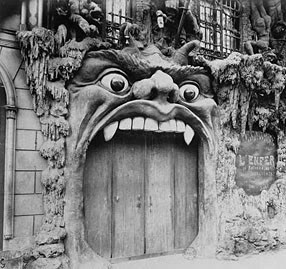
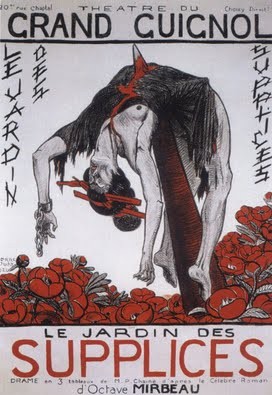
Ryan, with such a successful career as an actor what gave you the will to finally go behind the camera?
Ryan Gosling : For the job security (laughs),I could just hire myself. It wasn’t really a choice to go and direct, it came from being in Detroit and see these families, feeling compelled to start shooting. There are so many historic buildings that were being torned out, I just felt like I wanted to shoot them and then just being in those neighborhoods & spending time there, I just started to get lost in this strange reality of the people that were living there. The more I was there, the more I felt like there were something really heart breaking, and kind of universal & beautiful because they were staying and not leaving out of the ship. Everybody this is Paulo, Reda’s dog. He is going to be the star of our next movie!
(Reda’s dog, Paulo climbs up on stage ! It ends up on Ryan’s laps !)
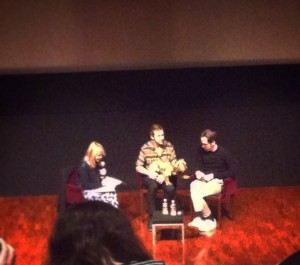
Reda, what convinced you to act in Ryan’s movie?
Reda Kateb: I liked the screenplay ! I was actually surprised that Ryan knew who I was ! (laughs) I was very admirative of Ryan’s work as an actor but I could also feel that he had his own artistic perspective on things. I had listened to his music (Ryan Gosling has a band called Dead Man Bones). I hoped the screenplay was good or else it would have been awkward ! But I loved the idea of a fairytale anchored in reality. My character didn’t have many lines but I knew he would give every character were important to him. The most complicated thing was to get a visa to work in the US (laughs).
Ryan, there are a lot of references to David Lynch, De Palma, Kubrick in the movie. What were your inspirations?
Ryan Gosling : My influence was more the goonies. When I first sent the script to Johnny Jewel the composer of the movie, he texted me “dark goonies, cool”. I thought that he understood the movie! I think that the references that we use was really eighties films that I grew up on. Like the secret of nymh, the goonies , all the Amblin movies. I wanted to do my version of a family’s life threaten by something mystical.
Reda, your character say in the movie that he was disappointed with the American Dream. What was your feeling before & after coming to the USA ?
(The question is a bit cliché & out of point especially since Reda has an International career…)
Reda Kateb: Enfant, I may had somewhat of an idea of the American Dream as a child but I dream more of cinema. This sentence in the movie is something that came from improvising. The idea was that this character could come from anywhere and emigrated anywhere. He happens to be in Detroit. It’s a big misunderstanding that life is always easier somewhere else. I remembered taking a cab in Detroit. The driver was from Africa and he was telling me those kind of things; What was great with Ryan is that he would let you improvize, figure out with you things about your character. You could feel free and also feel guided. It seems simple but it’s pretty rare.
Ryan, there is a difference between the editing from the screening in Cannes and the film in theaters now, why such a difference?
Ryan Gosling : In the initial cut of the film that we showed in Cannes, they were few pieces of music that I thought were public domain and I was wrong about it so I had to take them out of the movie. There were whole sequences of the film that were based on those pieces so I tried to replace them but it just didn’t work so I had to take the whole sequences out altogether. I think it worked out for the best because I love it like that.
There’s a lot of what we call the fantasy dimension, onirical dimension in your movie, what this something that you wanted from the start in the way to sort of talk of the social reality as well or is this something that growned organically on you ?
Ryan Gosling : The idea that this family was trying to hold on to their dreams when right outside of their door, it was a nightmare. The whole point of the film was to feel like it was sort of a dream turning to a nightmare. We were trying to walk the line between fantasy & reality, in a way that they were living it but never go completely into fantasy so we always try to root it as much as we could. And the only way we found to do that, was to always incorporate people from the neighborhood and try to bring them into the narrative so it gave the surreal quality for us. One of my favorite scenes of the movie, is the gas station scene where this woman starts to dance with Bully. There weren’t any gas station for another 40 blocks. I think they were selling something else at that gas station under the counter that people really wanted (laughs) and we shooting there. They couldn’t getting there so they started to get angry and so as a certain point it got tense. So we decided to let them be in the film. The actors were so good, they did it so beautifully to pull these people out of Detroit to put them in the Lost River fantasy. You get the sense that actors were working without a net. You knew that there was some kind of danger to it and there was! Because we didn’t know these people, we didn’t know what they capable of, but they were so charismatic and they were living this surreal world for real. That to me, is when the film really started to have a real identity for us.
Reda, how was to film an American independent movie, how is it different from a French independent one?
Reda Kateb : I think there are a lot of different ways to shoot a movie whether it’s in France or in the USA or even somewhere else. My favorite one is the one I experienced on this movie. It’s go somewhere and tell the story of the people who live there & include them. This is what we did for Je l’ai trouvé complètement sur Lost River. I would be totally incapable of making statement about one kind of cinema but what I can tell you is that with independent movies, you have more freedom.
Ryan, what’s your take on the independent cinema?
Ryan Gosling : I like it. I got experience with it. One of my first film was “the Believer” which was about a Jewish nazi. I was about 19 & for me, it was the greatest experience because we worked with a very small crew where you were able to tell a very strange & challenging -not for-everyone story and that was okay. We didn’t expect to make a big sucess out of it, we just wanted to tell the story. There were those festivals where we were able to show this film, find the audience for it. I tried to make some bigger films afterwards and it was a very different experience. I always sort of craved for it, maybe there’s a part of you that always want to go back. More like Student film mentality where you experimenting, and trying things together, it s a very different environment. Those are really the films that stay with you.
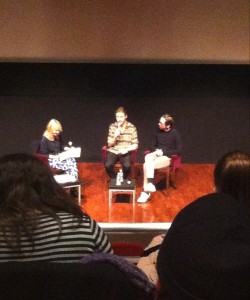
Reda, what did you think of Ryan’s actors’ directing ?
Reda Kateb : Ryan told : “Directing is like acting, you have to pretend everything is okay whan there’s always a problem to take care of!”. He seemed so relaxed & he always conveid a good energy to the cast & crew. I think you act better in a good atmosphere. He didn’t act like ” a puppet master” working from a distance. He is with you, actively trying thing with you. At the same time, he gives you space to create. I just directed my first shot film & I tried to create that too because that stroke me. I tried to work with people, guide them but also let them have a lot of freedom.
Ryan, where does the curse of the movie come from?
Ryan Gosling : When I was a kid I saw “one million under the water” and I found out that the river I grew up next to they have sunk a bunch of towns in order to make a river. This scared the living hell out of me because I realized I had been swimming in a river where they were ruins of town beneath me. I t bothered me so much that I didn’t want to take a bath for a long time because that’s where the water was coming from. It occupied my subconscious when I was going around theses neighborhoods. There is a ship wrecked quality to these neighborhoods. They feel like the footage of the Titanic. Suddendly I remembered the town where I was from and the images of that town started flying in. And the town that I was shooting became kind of melted with the town I grew up in.
Ryan Gosling wanted to tell us a story that really stroke him as a kid through the movies liked back then, to his personal experience of a “lost river” and his child’s nightmares. But unfortunately, his film doesn’t clearly translate those intentions…

